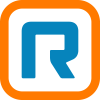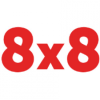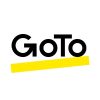Our content is funded in part by commercial partnerships, at no extra cost to you and without impact to our editorial impartiality. Click to Learn More
Zoom Phone is one of the cheapest VoIP services, with plans starting at just $10 per user, per month. That affordable price tag will get you all the common features needed for inbound and outbound calls, making it great value for money. Some additional communication tools are also included, such as call flip and call whisper, which others charge extra for.
However, Zoom isn’t the absolute best VoIP provider, according to our research. That would be RingCentral, which offers better security and more integrations. Still, Zoom Phone is great for what most businesses need VoIP for: simple, painless communication with all your important clients or customers.
Read on for our review covering the features and support offered by Zoom Phone’s three paid plans or visit our Zoom pricing guide to compare costs directly with other top VoIP providers.
The Best Zoom Phone Alternatives for 2024
- RingCentral – Best for supercharging customer service of all kinds
- 8×8 – Best for streamlining communications (option of unlimited or global extensions)
- Vonage – Best for training features (improving staff on the job)
If you’d like to find out more about which one will suit you best, you can use our phone systems comparison tool to get completely free customized quotes in under a minute.
Before we get into this Zoom Phone review, we’d like to clarify that this article is a detailed look at Zoom’s VoIP/softphone offering, Zoom Phone. We aren’t covering the company’s world-famous video conferencing software that had a 48.7% share of the video conferencing market in 2021, after becoming a near-universal fixture for companies offering remote working during and after the pandemic.
Even though it is a rather new product, Zoom Phone quickly shot up in our ranking as one of the top three providers in our last round of VoIP research.
Zoom also launched Zoom Workplace, a consolidated plan — formerly known as Zoom Workplace — that includes Meetings, Team Chat, Whiteboard, and VoIP phone products. However, Zoom Phone is only available on the Zoom Workplace Business Plus or the Zoom Workplace Enterprise plans, with the latter providing a fully featured PBX. It is possible — and cheaper — to buy Zoom Phone as a standalone product, which is what we’ll be discussing in this article.

Pros
- Very low starting price ($10/user/month)
- Excellent for managing high numbers of incoming calls (spam prevention, hold music, etc.)
- Low-cost training features, perfect for growing teams
- Vastly improved security features make it an option for teams working with sensitive data
Cons
- Limited number of CRM and Helpdesk integrations
- No email support available and you don't get much help with onboarding
- It's missing outbound call features sales teams tend to need
- Pricing starts at $10/user/month

- Unlimited plan from $15/user/month

- Select plan ($20/user/month) with unlimited calling to 40+ countries

Zoom Phone Features
Overall, our researchers found that Zoom Phone offers users a comprehensive range of inbound and outbound communication features, plus several useful integrations.
Although its security features have been questioned at times, recent improvements have ensured there are very few holes in Zoom’s armor, helping it to a 4/5 for security. Users can now enable two-factor authentication to add a second layer of security to their accounts, and Zoom now enforces a range of complex password rules so users can’t make weak passwords. All Zoom Phone voice recordings, on the other hand, are stored in Zoom’s cloud.
Zoom scores 4.2/5 for features and offers users a host of basic inbound communication features including customized greetings, ring groups, a call queue, spam prevention, a virtual receptionist, and localized + toll-free numbers. Remarkably, these features are all included in Zoom’s cheapest plan, making it far and away the best provider for handling inbound calls from customers while on a budget.

The Zoom Phone interface on mobile and laptop devices.
Source: Zoom
All plans offer HD call qualities, with active noise and echo cancellation along with keyboard typing suppression to ensure your voices are heard. Zoom also has advanced conversation features like call forwarding, call flip, call whisper, and call barge on all of its plans. These features allow users to transfer calls, switch devices, and join calls between other users and customers. These features are must-haves if you’re working in customer service or sales and you need to be supervising and training new staff members.
These features are less common for a VoIP provider, particularly one as affordable as Zoom Phone: Neither 8×8 or RingCentral offer call whisper or call flip on their first two plans, even though these are two of the best smartphone apps for businesses. Net2Phone, another VoIP provider we tested, does not offer this at all.
Zoom Phone lacks some collaboration features (no Zoom Phone plans support document sharing or task management), but it does have video conferencing with Zoom Meeting, and a team messaging function. The range of customer support options offered by the likes of RingCentral aren’t available either, with Zoom only scoring 3.3/5 for this assessment area.
Zoom Phone also needs an existing broadband internet connection to work, so you won’t be able to use it without Wi-Fi. However, Zoom’s video conferencing app can work using cellular data, although it could end up using a lot of it, depending on the length of your meeting.
If Zoom fits your budget and has the features you need, fill in this 60-second survey to get matched with the right plan.
Since our last update...
Like many businesses, Zoom is rolling out the red carpet for AI features in a big way, with an update in March 2024 that brought a lot of new functionalities to the platform for improve productivity.
For starters, Zoom Phone added AI summaries for phone calls and SMS messages from Zoom AI Companion, so users can get in-depth analysis of phone calls and texts sent right to their devices. You’ll also be able to take advantage of voicemail prioritization, which allows users to “define a topic or intent to assist them in managing their voicemails,” according to the Zoom Phone release notes.
Zoom Phone has three pricing plans: the Metered plan ($10 per user, per month), the Unlimited plan ($15 per user, per month), and the Select plan ($20 per user, per month).
Zoom’s Metered plan tied with Google Voice as the cheapest VoIP provider plan we tested. Google Voice has always excelled at security, scoring 5/5 on our recent tests, but not much else. Zoom Phone recently improved its security score to 4/5, and now offers multi-factor authentication and password rules. It’s just a bit more of an all-rounder than Google Voice, with better integrations and features. This makes it a more scalable product that will suit a wider range of growing businesses.
While it’s good that Zoom has a wide variety of certifications and attestations, so do a lot of VoIP providers. Zoom’s poor score is down to the fact that there’s no multi-factor authentication option, and password rules aren’t enforced for users. Both of these features are included in all Google Voice plans, as well as all 8×8 plans. There’s also no user permissions feature, which allows admins to restrict other users from accessing parts of the software.
However, Zoom does well in other areas, such as customer score and with its overall feature offering – especially when compared with other providers like MagicJack. If you opt for a Zoom Workplace package that includes Zoom Phone, you’ll pay $25 per user, per month for the Zoom Workplace Business Plus plan. The Zoom Workplace Enterprise plan has no public pricing at present.
Zoom additional costs and add-ons
Zoom has a few optional add-ons which cost a little bit extra, but might just make one of its packages a better deal for your business – especially if these are essentials. The most popular add-ons are:
- Toll-free numbers from just $111.60 per year
- Additional phone numbers from $111.60 per year
- International calling from $112 per year
There’s also a “Zoom Phone Power Pack” which costs $279 per year, and it’s designed for call center supervisors and receptionists. It includes what Zoom calls “enhanced call queue analytics” as well as “historical insights”.
Is Zoom Phone Right for Your Business?
Zoom Phone is a good option great option for small businesses looking for a way to better manage incoming calls but don’t have a huge pile of money to throw at software – or an on-premise landline solution. These are significantly more expensive than simply purchasing software.
Naturally, it will also suit businesses already using Zoom’s video-calling software that also wants the benefits of VoIP easily integrated into their solution.
If you’re looking for features needed to train staff on the job, on the other hand, but don’t have much of a budget to spend on them, Zoom is also one of the best options. Its training features are comparable to some of the industry leaders, but it takes a lot less off your bottom line.
Importantly, Zoom will also suit businesses that want a communications solution that can grow alongside them. Zoom offers an all-in-one communication hub that includes Phone, Meetings, Whiteboard, Webinar, and Contact Center functionality.
If you’re handling highly sensitive information and if security is high on your priorities, Zoom is a good option. End-user security features like password rules and multi-factor authentication are included, and despite many businesses now considering this sort of thing essential, not all providers offer this.
One final thing to bear in mind is that, although Zoom Phone integrates with major services like Salesforce, Zendesk, and Microsoft Teams, there aren’t that many others on offer. That won’t matter to the many millions of users that primarily use these platforms, however.
All in all, Zoom Phone is a solid choice, particularly for those on a strict budget. However, as we’ve covered, the low cost comes with a few shortcomings that could be a deal breaker for certain businesses, so make sure you know the needs of your business before you sign up for Zoom Phone’s monthly or yearly contracts.
Zoom Phone Integrations
Our researchers gave Zoom a score of 3.7/5 for external connections, since it offers some of the most widely used software solutions out there. These include:
- Salesforce CRM
- Zendesk Helpdesk CRM
- Zoom video conferencing service
- Gmail
- Microsoft Outlook
- Google Workspace
Zoom’s score isn’t as high as top picks 8×8 (4.2/5) and RingCentral (4.3/5). RingCentral has 96 CRM-related integrations, at least 57 analytics integrations, and external live chat options in the form of WhatsApp and Facebook. The caveat here is that RingCentral’s pricing plans aren’t nearly as affordable as Zoom’s.
Zoom Phone Customer Support
As with any software, if it’s difficult to acquire support when things go wrong, you can end up with some serious periods of downtime that can significantly affect your bottom.
Overall, Zoom scores a respectable 3.3/5 for customer support, offering a user forum and an extensive online knowledge base for customers to refer to if they’d like to attempt to troubleshoot a problem themselves.
Previously, some of Zoom’s customer support options were only available for an additional cost. However, live chat, and phone support are now included on all Zoom Phone plans. However, there’s still no onboarding support offered on any of Zoom’s plans, and if you pair it with Zoom Meetings, this may change the status of the support you’re eligible to receive.
8×8 and RingCentral both score 5/5 for customer support, since they offer all the features mentioned above at no extra cost, even the ones Zoom lacks or charges extra for, and offer a better all-around customer service experience. See if one of their plans is a better fit for your business with a free quote.
Zoom Phone Review: How It Compares to Other VoIP Providers
The best VoIP providers include plenty of worthy competitors to Zoom. Our research team found RingCentral Office was the best overall softphone app for businesses since it offers a large feature range for its price.
RingCentral stands above Zoom when it comes to customer service, thanks to email support channels that Zoom doesn’t offer, as well as onboarding aid.
The 8×8 softphone app is the best for sales teams since it streamlines internal collaboration with functions like easy document sharing. 8×8 also has a perfect 5/5 score for security, offering a couple of perks that Zoom doesn’t have, including user permissions. Here are the best Zoom alternatives:
| Price from The typical lowest starting price. The lowest price available for your business will depend on your needs. | Our Rating Relative score out of 5 | Best For | Core Benefit | |||||||
|---|---|---|---|---|---|---|---|---|---|---|
| BEST Zoom Alternative | ||||||||||
| Zoom Phone | RingCentral | 8×8 | Vonage | GoTo Connect | Ooma | Nextiva | Net2Phone | NUACOM | Dialpad | Google Voice |
| Custom | Custom | |||||||||
| 4.6 | 4.7 | 4.6 | 4.3 | 4.2 | 4.1 | 4.1 | 4.1 | 3.9 | 3.8 | 3.4 |
| Value for money | Integrations | Security | Training features | Managing large volumes of inbound calls | Overall customer experience | Professional services | Great for international businesses | Great customer satisfaction | Startups on tight budgets | Small businesses that prioritize security |
| Affordable pricing | Large variety of Helpdesk and CRM integrations | Integrates with various other communication tools | Staff improve on the job | Provides call management features at low cost | No contracts, keep your number, and work from anywhere. | Unlimited Calls in U.S. & Canada | Integrates with Microsoft Office, Google and others | Great automation and analytics tools. | High customer satisfaction at low prices | Integration with the Google platform |
That said, Zoom remains a top option: Our research determined that Zoom Phone has a high average customer satisfaction score (4.4/5) which is a testament to the quality of the platform, and its impressive range of inbound and outbound communication features for as little as $10 per user, per month.
We take our impartial research and analysis seriously, so you can have complete confidence that we're giving you the clearest, most useful recommendations.
After conducting an initial exploration to identify the most relevant, popular, and established tools in the market, we put them through their paces with hands-on testing to see their real strengths and weaknesses. In this case, we put ten VoIP systems to the test across 78 areas of investigation.
Based on years of market and user needs research, we've established a VoIP system testing methodology that scores each product in seven main categories of investigation and 16 subcategories; this covers everything from the features and security options available to the product's value for money and customer score, as well as much more.
Our main testing categories for VoIP phone systems are:
Customer Score: the external customer opinion as to their satisfaction with the VoIP product; the feedback and ratings given by customers who have used a particular VoIP system, as well as the market poisiton and reputation a VoIP software holds.
Cost: the pricing structure associated with the VoIP service. It includes factors such as monthly subscription fees, call rates (especially for international calls), setup fees, hardware costs (if applicable), and any additional charges for add-on features or services.
Features: the functionalities and capabilities offered by the VoIP service. This can include basic features such as call forwarding, voicemail, call waiting, and caller ID, as well as advanced features like auto-attendant, conference calling, and call recording.
External Connections: the VoIP service's ability to connect and integrate with external systems or devices. This can include compatibility with existing phone systems, integration with mobile devices, and support for softphones or IP phones.
Customer Support: the assistance and resources provided by the VoIP service provider to customers. This can include technical support, documentation, online resources, knowledge bases, and access to customer support representatives.
Security Options: Security options refer to the measures and features implemented by the VoIP service to ensure the confidentiality, integrity, and protection of voice communications and data. This can include encryption of voice calls, compliance, password ruels and user permissions.
Scalability: the ability of the VoIP service to accommodate the growth and changing needs of an organization. This includes factors such as the capacity to handle a growing number of users, support multiple locations or offices, and scale up or down according to the organisation's requirements.
When it comes to calculating a product's final score, not all testing areas are weighted evenly, as we know some aspects matter more to our readers than others, which are merely "nice to have." After hundreds of hours, our process is complete, and the results should ensure you can find the best solution for your needs.
At Tech.co, we have a number of full time in-house researchers, who re-run this testing process regularly, to ensure our results remain reflective of the present day.
Verdict: Is Zoom Phone Worth It?
Zoom is our third-best VoIP provider, offering a solid set of features for one of the lowest prices on the market at $10 per user, per month. This is particularly impressive when you consider the number of inbound and outbound call features you get with Zoom, as well as conversation features like call flip and call whisper, which some providers don’t offer at all.
However, RingCentral was our top-rated provider overall — and the biggest gap between RingCentral and Zoom is actually integrations, with Zoom offering some widely used programs like Salesforce and MS Teams, but not the vast library that RingCentral does. RingCentral also has slightly better security options and is more scalable for growing businesses.
Every business is different and Zoom or RingCentral might not suit yours — if you’d like to cut down your research time and get matched to a provider immediately based on your company’s size, sector, and exact needs, use our VoIP quotes comparison tool.
Our content is funded in part by commercial partnerships, at no extra cost to you and without impact to our editorial impartiality. Click to Learn More












